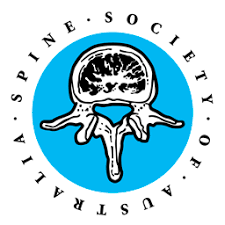Total or Artificial Disc Replacement is a surgical procedure in which a diseased or damaged intervertebral disc of the spinal column, is replaced with an artificial, man-made or “artificial” disc device. Artificial Disc Replacement can be performed on the lower back (lumbar spine) or the neck (cervical spine). This spine surgery technique, aims to relieve back pain and maintain the intervertebral disc height, while restoring the physiologic motion to a person with a healthy disc.
The first lumbar total disc replacement, or LTDR, which had the form of a steel ball, was implanted by Swedish Ulf Fernstöm, using an anterior approach, in the 1960’s. Initial results seemed encouraging, but proved disappointing long-term, as the ball subsided into the subchondral bone, or the layer of bone just below the cartilage in a joint. It is the ‘shock absorber’ in weight-bearing joints.
In the early 1980s, Schellnack and Buttner implanted the SB Charité® prosthesis, which comprised two chromium-cobalt plates and a mobile polyethylene core. Then in 1989, Marnay used the ProDisc-L®, which has plates with a central titanium stem. Since then, many different LTDR designs have come onto the market.
There are a number of different disc designs. Each is unique in its own way, but all maintain a similar goal: to reproduce the size and function of a normal intervertebral disc. Some artificial discs are made of metal, while others are a combination of metal and plastic, similar to joint replacements in the knee and hip. Materials used include medical grade plastic (polyethylene) and medical grade cobalt chromium or titanium alloy. These materials have been used in the body for many years.
The most commonly used Total Disc Replacement designs have two plates. One attaches to the vertebrae above the disc being replaced and the other to the vertebrae below. Some devices have a soft, compressible plastic-like piece between these plates. The devices allow motion by smooth, usually curved, surfaces sliding across each other.
The future of artificial disc replacement technology will likely include advancements in the design of implants and tools for diagnosing the source of pain, as well as the development of ways to return the disc to normal function, without the insertion of any biomechanical device.
In general, a good candidate for disc replacement is someone having the following characteristics:
- Back pain caused by problematic intervertebral discs in the lumbar or cervical spine regions
- No significant facet joint disease or bony compression on spinal nerves
- Body size that is not excessively overweight
- No prior major surgery on the lumbar spine
- No deformity of the spine (scoliosis)
Patients who have suffered from back pain for at least six months after nonsurgical treatment, especially if the pain and other symptoms are making it difficult to complete everyday activities, then spine surgery may be an option to provide pain relief and restore one’s ability to function. Evaluation with MRI and x-rays may be enough for the surgeon to render an opinion, but other tests, including CT scan and provocative discography may be needed to determine if surgery is required and an Artificial Disc Replacement is an option.
Most Artificial Disc Replacement surgery will take from 2 to 3 hours. Your surgeon will approach your lower back from the anterior (front). With this approach, the organs and blood vessels must be moved to the side. This allows your surgeon to access your spine without moving the nerves. Usually, a Vascular Surgeon assists the Orthopaedic Surgeon with opening and exposing the disc space. During the procedure, your surgeon will remove your problematic disc, and then insert an Artificial Disc Replacement into the disc space.
In your pre-operative consultation with Prof. Malham, please ask questions and afterwards, thoroughly read the information sheets that may be provided. You can also reference our website section ‘Making an Informed Decision’ which may assist you in making the right decision for you, about your spine surgery.
More Artificial Disc Replacement information – coming soon!



